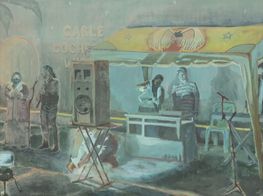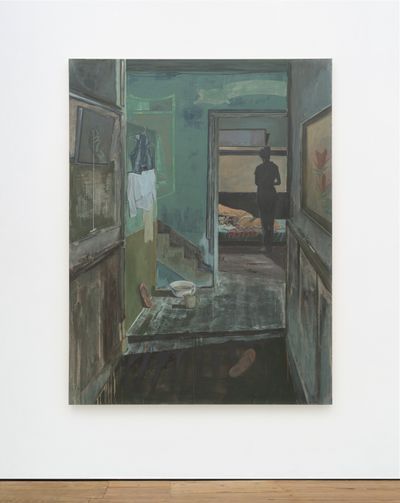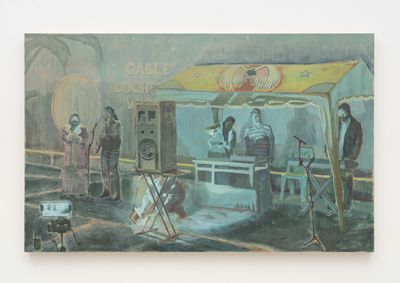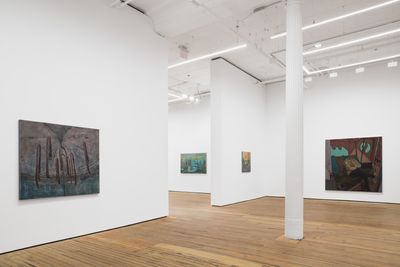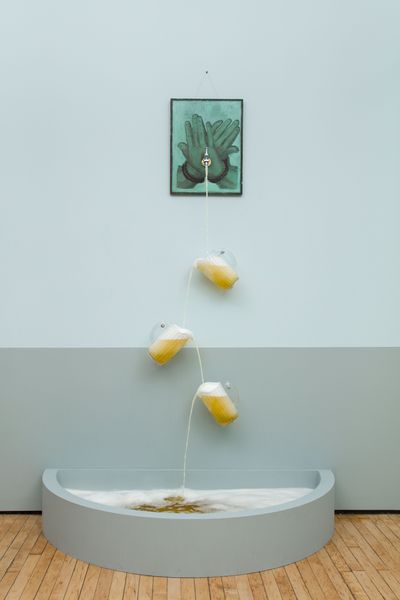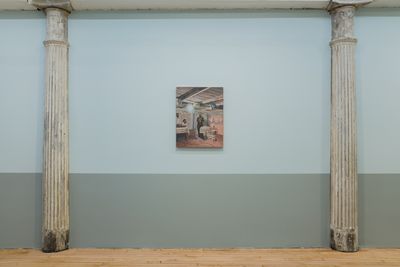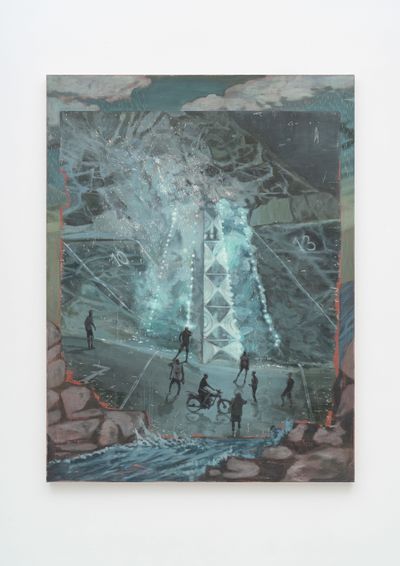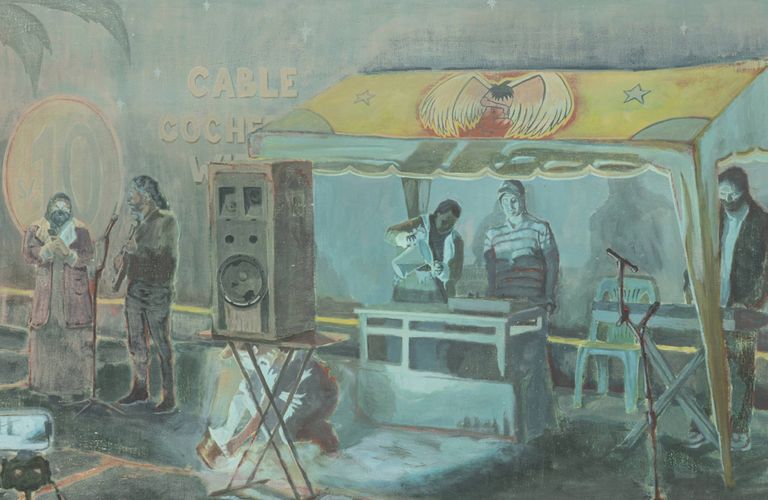
Arturo Kameya Absorbs Us into Memories of His Past at GRIMM New York
The Peruvian artist's second solo exhibition at GRIMM introduces memories of his upbringing and the socio-political complexities of his motherland.
Arturo Kameya's exhibition at GRIMM New York, Los Ovnis (24 March–6 May 2023), features installations and paintings that imbue everyday scenes with magic and tension, at once hazy, nostalgic, and dreamlike.
Kameya grew up in the suburbs of Lima in the 1990s where he witnessed the socio-political conflict consuming his country. Now based in Amsterdam, his paintings incorporate clay powder to help evoke his childhood memories of Peru.
When did you start to use clay powder with acrylic on canvases?
During a residency program at the Rijksakademie van Beeldende Kunsten in Amsterdam from 2019 to 2021, I began to incorporate clay powder into my paintings.
My intention was to replicate the texture and appearance of the muted paint layers found on adobe houses, which is reminiscent of the home I grew up in in Peru. Although this material is not commonly used in new constructions in urban areas of Peru anymore, it remains the primary construction material in rural regions.
Pale green and blue hues appear throughout many of your paintings. Are these colours that you particularly like or do they carry a specific resonance for you?
Those colours are mostly derived from the pale yellow shade that was dominant in the house I lived in. I often incorporate variations of the colour scheme prevalent in my neighbourhood.
I use colour as a means to convey the context of the images I work with. It's not necessarily crucial to explicitly communicate every bit of information to the viewer. But rather, certain aspects should permeate through the paintings.
Your paintings often depict domestic scenes, albeit ones with subtle references to the location, as well as public events or settings that are very specific to Peru.
These everyday scenes are often imbued with a magical quality. Are most of these images from personal memories?
The paintings are a blend of personal and public imagery, such as domestic and public images, video archives on Youtube, personal photo archives, police documentation, and sports events. In a similar way, the contents of the paintings are collages of various sources, and the percentage of personal and public content varies in each work.
Most of the images are drawn from real events, whether they are personal, public or a combination of both. I tend to make works based on events that could have been recorded or documented, even if they are considered so 'unimportant' that they lack visual records.
Your work reveals the complexities inherent to the socio-political situation in Peru during your upbringing. There is an underlying tension to the images. Is this deliberate?
All contexts are complex and are typically immersed in tense relationships. Peru is no different; the urban and rural relationship is unequal, often unfair, and confrontational. Repression and violence from state institutions have been [commonplace], and as a result, numerous civilians during this and last year's riots died.
The disapproval rates of said institutions are at their historical highest—over 90%. When it comes to art, what you see is a set of choices and decisions that have already been made, before they enter a realm of interpretation where you have less control over their meaning.
In that sense, I often try to build up paintings as pivot points that develop a set meaning for those who are familiar with the references, and hopefully they can provide an intuitive experience for those who don't.
Has your perspective of your upbringing in Peru and the country as a whole changed through living abroad for so long now?
Living abroad can be a bit disorienting at times. There is a difference between first and secondhand information, however, circumstances have always made me go back and forth between Peru and the Netherlands.
When I first arrived in Europe a few years ago, I noticed that the discussions surrounding Latin America were still quite Eurocentric. However, as time progressed—especially after the events that occurred during the pandemic and the shift in societal perspectives on race and gender—the views on 'otherness' have become more inclusive in some cases. In other cases, they try to only appear as if they were.
Now you live in Amsterdam, what do you most miss about Peru?
Although it may seem contradictory, I tend not to romanticise my view of Peru. Especially given the current state of affairs and the lack of accountability within certain sectors of the government.
That being said, it is my home country. So the cultural aspects will always be the things that pull you back. For example, social interactions and pop culture are infused with a particular type of humour that is difficult to translate, not due to a lack of understanding the references, but because it's tied to a unique perspective on life.
How have you found painting at a much larger scale for the new works in Los Ovnis?
It's definitely different. When working on smaller formats, I tend to be very physical with the surface of the paintings because there's a lot of sanding and layering techniques. And because I use water-based materials, there are certain parts of the process where I have to work quickly before they dry.
With large canvases the situation is different. The process takes a more controlled approach so there is more planning beforehand.
You have incorporated playful sculptural elements or installations to your exhibitions. Did this preempt your work as a painter or have you always worked with both mediums alongside one another?
I studied painting, but after graduating I began to work with photography, video, and installations.
I re-encountered painting as a medium during my residency at the Rijksakademie van Beeldende Kunsten. This is a common experience for painters who come from the same university as me, as the repetitive nature of the curriculum can sometimes cause saturation.
What's next for you?
I am very excited to be a part of the 22nd Biennial Sesc_Videobrasil (18 October 2023–28 April 2024) in São Paulo this year. I also have a solo exhibition scheduled for early next year at Marres House for Contemporary Culture in Maastricht, Netherlands.
Main image: Arturo Kameya, Livestream (2023). Acrylic and clay powder on canvas. 100.3 x 160 x 4.4 cm. Photo: Jonathan de Waart.

